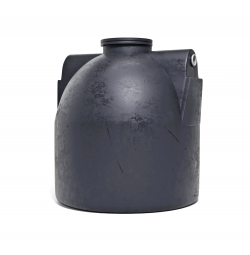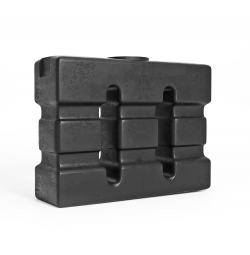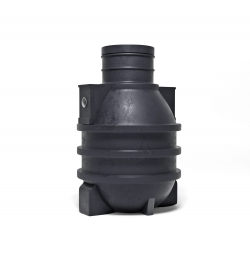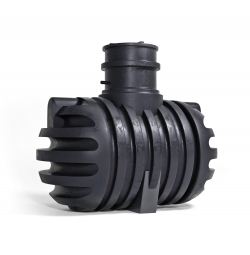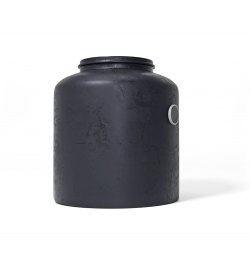Septic tanks and grease traps
Boralit offers a range of products in polyethylene. Within this range, there are also septic tanks.
The classic faecal tank only receives wastewater from the toilet (the so-called black water). The tank for all domestic wastewater receives all wastewater from the house, i.e. the black (toilet) water as well as the grey water.
Quite often only a classic faecal tank (black water) is installed, although a tank for all domestic wastewater would certainly be preferred. The ideal type is the tank for all domestic wastewater. The wastewater received by this tank is much more homogeneous allowing the tank to function much better. In this case, the volume of the tank should be larger.
No rainwater should be allowed to enter the septic tank because this would render it useless.
The systems are easy to install by the limited weight and the tanks are guaranteed watertight.
On the septic tanks, there is a warranty label of 50 years on the housing against all perceptible production errors. The placement instructions have to be strictly applied. On the components, there is a warranty of 2 years.
A septic tank essentially liquefies the solids in sewage water. In this tank the solid biological wastes are either liquefied or converted into small particles. Some waste is dissolved into the liquid and the biological waste is consumed by anaerobic bacteria living in the tank. These anaerobic bacteria (living without oxygen) feed on the waste and convert it into gasses, small suspended solids and sludge.
The gasses dissipate through the ventilation shafts. The remaining solid particles (sludge) sink to the bottom of the tank (that is why a septic tank has to be pumped out from time to time). The smaller suspended particles are washed out to the sewer or to the water treatment system. The lighter particles float to the surface and form a "scum" layer. This scum layer cuts off the underlying liquid from the air, so less smell is formed and the bacteria can do their job more effectively.
A septic tank must be large enough to allow the raw sewage sufficient time to dissolve and be digested by the bacteria. This takes at least 5 days of retention time. A septic tank must be constructed with a baffle so the outflow begins well below the liquid surface. That way, if there is more inflow than normal, the incoming liquids cannot flow directly out of the tank without having allowed the bacteria to do their job. A similarly baffled inflow prevents the scum layer, that seals out the air, from being destroyed . To ensure effective performance, no rainwater should be allowed to enter the septic tank.

